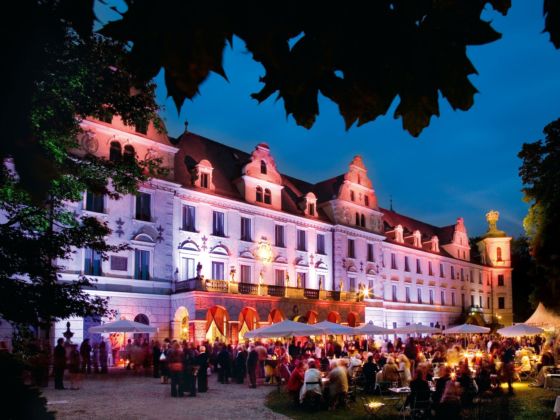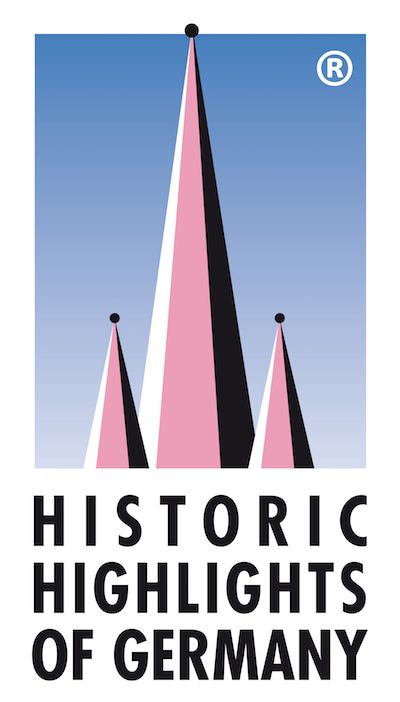Travel guide to Germany’s historic cities
When it comes to history, few places tell as enticing or complex a story as Germany. With Roman, Celtic, French, Prussian, and dozens of other influences meeting here over the centuries, this is where the light of Europe’s past glows brightest. The 16 Historic Highlights of Germany below — most dating back a thousand years or more — will escort you to a time and place you didn’t realize still existed. What awaits your eyes are aurulent palaces, medieval lanes, and views from high church towers.
But what awaits your taste buds? Beyond the fascinating stories and preserved relics of centuries gone by, the Historic Highlights of Germany each lay claim to one or more truly special culinary delights. We’re talking heritage-rich recipes, centuries-old markets, and dozens of other sweet and savory experiences most travelers probably aren’t familiar with. It’s the perfect combination of time-honored places and time-honored tastes. Scroll down to see what we mean.
Historic Highlights of Germany
Historical highlight: The Aachen Cathedral. Built in 798 and found in the Old Town, it was the first German monument to be awarded UNESCO status.
Must-try dish: Aachener Printen, a cake-like biscuit often used in dishes like Aachener Sauerbraten.
Must-have experience: The Aachen Christmas Market is the stuff of dreams. It’s the biggest of its kind in Germany — good luck trying to resist the seductive smells of mulled wine, candles…and fresh-baked Aachener Printen, of course.
Historical highlight: The Fuggerei. Five hundred years ago, the Fugger family built this gated community to give back. Rent cost one Rhenish gulden — or about $1 — and today, residents live here for the exact same price.
Must-try dish: Zwetschgendatschi, a plum cake frosted with sugar and cinnamon, typically served with whipped cream and fresh coffee.
Must-have experience: The interactive and hands-on Fugger und Welser Erlebnis Museum will take you through the Golden Age of Augsburg. And each year around the summer solstice, the city lights up with Augsburg Summernights, the largest city festival in Bavaria.
Historical highlight: Beethoven’s birthplace can be found right in the heart of the historic town center, not far from the Romanesque cathedral and rococo-style Old Town Hall.
Must-try dish: Himmel un Ääd, aka black pudding, liver sausage, fried onions, and mashed potatoes with apple sauce.
Must-have experience: Beethovenfest Bonn. During the entire month of September, the city hosts top international orchestras, lauded conductors, outstanding soloists, famous ensembles, and upcoming young artists.
Historical highlight: The Krämerbrücke, or Merchants’ Bridge, is the longest European bridge covered with inhabitable buildings (mostly shops, cozy cafés, and restaurants).
Must-try dish: Bratwurst, topped with BORN mustard (a local product) and absolutely no ketchup.
Must-have experience: You’ve got three super-solid festival options: Rostkultur, a giant bratwurst festival in Cathedral Square; the Cathedral Steps Festival, where the steps from the Cathedral of St. Mary to the Church of St. Severus become a stage (for 2018, that means Carmen, Aug 3-26); and the 168th Erfurt Christmas Market, where you can pick up traditional crafts, Thuringian specialties, and spend time snapping photos by the enormous candle-lit Christmas tree.
Historical highlight: The Freiburger Münster, or Freiburg Cathedral, is a Gothic masterpiece that dates back to 1513. Climb the 381-foot-high tower and take in the views to fall even more in love with the city.
Must-try dish: Lange Rote, a traditional sausage found at the market at Münsterplatz, or Cathedral Square.
Must-have experience: Ganter Brewery and Alte Wache House of Badish Wines both tout Wier on their menus. It’s an awesome wine-infused beer, and they’re both pioneers of this fascinating hybrid movement. And then there’s Alte Apotheke, an old drugstore that’s now all about the gin and absinthe. 5pm on Fridays is free tasting time, no registration needed.
Historical highlight: Heidelberg Castle. Walk up the hill to access the ruins, or just hop aboard the funicular.
Must-try dish: “Student’s Kiss” at Café Knösel. It’s a small chocolate-y cake, traditionally given as a sign of courting.
Must-have experience: Heidelberg University is over 700 years old and still an outstanding example of modern science. Check out the affiliated BODY WORLDS museum — with a focus on anatomy, sure, but also on the anatomy of human happiness.
Historical highlight: The gondola ride across the Rhine. It takes you up to Ehrenbreitstein Fortress, 400 feet above the river.
Must-try dish: Döppekooche, a savory pie consisting of grated potatoes, onions, eggs, and bacon/sausage, with cold apple sauce on the side.
Must-have experience: Koblenz Summer Festival and its annual highlight, Rhein in Flammen, or Rhine in Flames. It’s not what it sounds like — it’s actually one of Europe’s largest fireworks shows, all set over the waters of one of the continent’s most famous rivers.
Historical highlight: The Hansemuseum. Lübeck was a member of the historic Hanseatic League, and the interactive museum is a fantastic way to explore this bygone world of wealth and power.
Must-try dish: Labskaus, a mix of meat, fish, potatoes, onions, and beetroot, traditionally served with fried egg and gherkins.
Must-have experience: Lübeck’s 875th anniversary party, happening in 2018. Locals will be opening their doors for visitors to experience Kaffeeklatsch — coffee, cake, and a good chat.
Historical highlight: The Prinzipalmarkt, home to the historic Town Hall, a gothic building from the mid-14th century that’s nearly unparalleled in all of Germany.
Must-try drink: Altbier at the brewpub of Pinkus Müller, founded in 1816. It’s now officially the last of its kind in Münster.
Must-have experience: Seeing the Prinzipalmarkt transformed into an open-air dining room at the Hanseatic Repast Münster, where local shopkeepers and chefs serve their guests at the 300-foot-long table. And if you can time it right, August 30 through September 1 is “Schauraum,” where the city’s museums and galleries are all open till midnight for free.
Historical highlight: Osnabrück is where the treaty to end the 30 Years’ War was signed, and every year there’s a parade to commemorate this event.
Must-try dish: Vegetables — kale in winter, asparagus in summer.
Must-have experience: “Tasty Kitchen” is a pop-up restaurant designed by one of the best three-star chefs in the world. (You just have to know where to find it!)
Historical highlight: Schloss Sanssouci (Sanssouci Palace), the summer residence of Friedrich the Great, and its English gardens.
Must-try drink: A slightly sweet, slightly bitter Meierei Hell beer at Meierei, in Park Neuer Garten.
Must-have experience: The Potsdam Walking Food Tour. You’ll explore the sights (including the famous Dutch Quarter) while trying scrumptious Brandenburg specialties.
Historical highlight: The Thurn & Taxis ancestral castle, a monastery-turned-chateau residence.
Must-try dish: Bratwurst and Sauerkraut served with Kipferl (a dinner roll with caraway seeds) and sweet mustard from the Historic Sausage Kitchen — the oldest sausage kitchen in the world.
Must-have experience: Attending the Regensburg Sausage Seminar, where you can try your hand at making your own Bratwürste or Weisswürste.
Historical highlight: St. Mary’s Church and the astronomical clock, built in 1472.
Must-try dish: Herring, flounder, or cod — roasted, stewed or smoked.
Must-have experience: Hanse Sail Rostock, August 9-12, is one of the world’s largest maritime festivals, where hundreds of traditional sailing and museum ships gather. The Rostock Cruise Festival, September 14-16, celebrates the world of cruises at the port of Warnemünde. Always a party on the water!
Historical highlight: The Porta Nigra, a beautifully preserved Roman fortified gate, built around 180 AD.
Must-try dish: Vintner’s Steak, marinated in a special Riesling sauce, grilled over vine stock and charcoal, served with homemade potato casserole, salad, and a glass of Riesling.
Must-have experience: The Rheinisches Landesmuseum, a treasure trove of Roman artifacts.
Historical highlight: The Kurhaus Wiesbaden, one of the oldest casinos in Germany.
Must-try dish: Kunder chocolates, some of the finest in all of Germany, are made here.
Must-have experience: Visiting Henkell, Germany’s largest sparkling wine producer, and getting nearly lost in their seven-story-deep cellars. Fittingly, there’s also the Rheingau Wine Festival Wiesbaden — for ten days in August, Wiesbaden’s downtown turns into the “world’s longest wine bar.”
Historical highlight: The Würzburg Residence, an incredible Baroque palace that contains arguably the most beautiful staircase in the world (leading up to the world’s largest painting, the famous Tiepolo Fresco).
Must-try dish: Blaue Zipfel, pork sausages slowly simmered in water, vinegar, onions, carrots, leeks, bay leaves, and juniper berries.
Must-have experience: The Bavarian State Horticultural Show, complete with themed gardens and a walk through the lives of the pioneers of flight.


